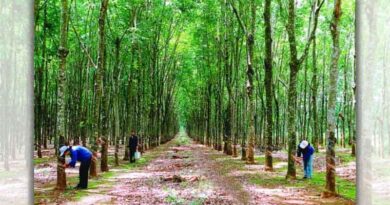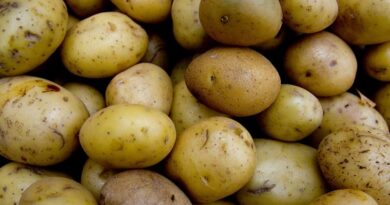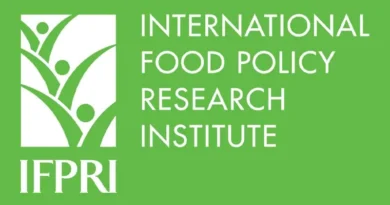How to adapt to new environmental demands and regulations in agriculture
01 September 2023, US: Farmers are facing a historic change in the way they manage their crops and produce food. New regulations, of greater or lesser impact, from Europe to the US or Latin America, focus on sustainable agriculture that is respectful of the environment, profitable and socially committed to the territory. A transformation that farmers must adapt to—but how? What tools do they have?
Advancements in agriculture in the last century have exponentially increased production (some 300–400% more) to feed a growing population that will exceed 9 billion by mid-century. But this growth has not come without a price. Agriculture as a whole is responsible for more than 20% of greenhouse gas emissions and consumption of 70% of the planet’s water.
Therefore, countries are working to move agriculture toward a more sustainable model, one that can also be a major source of CO2 absorption. How are they doing it? We’ll tell you everything below.
THE UNITED STATES’ FOCUS ON TECHNOLOGY
The US Department of Agriculture (USDA) has launched the Agricultural Innovation Agenda, with the aim of increasing production (up to 40%) and, at the same time, reducing the agricultural environmental footprint (-50%) based on technology and agronomic innovation. The plan tries to improve processes, rather than apply restrictions, so that crops reach their full potential through digitization, automation, or artificial intelligence. But it also wants farmers to have a more natural relationship with their crop fields through the use, for example, of beneficial microorganisms that help make the most of resources and improve profitability.
In this context, the USDA has included Utrisha™ N, the microbial-based nitrogen fixing product also called BlueN™, in some markets as the first biostimulant in the USDA Agricultural Marketing Service Process Verified Program (PVP).
EUROPE’S “LESS IS MORE” APPROACH
Reduce. This is the keyword in Europe. The Farm to Folk strategy is the essential core of the European Green Deal, which aims to reduce dependence on synthetic pesticides and fertilizers to increase organic agricultural land, improve animal welfare and reverse the loss of biodiversity. In short, reducing the environmental and climatic footprint of the European food system. For this, the European Union has set very specific objectives for 2030: reduce use of the most hazardous pesticides by half and have organic farming occupy 25% of agricultural land.
One of the most important aspects included in the various European strategies and documents is the consideration of soil as an essential, non-renewable resource for agriculture. Soil, essential in the capture and storage of carbon, the regulation of water, water regulation and the nutrient cycle, faces major challenges such as its erosion, desertification, loss of organic matter and biodiversity. Therefore, the agriculture of the future must be an ally of agricultural soil, promoting its health and gradually improving its properties, rather than advancing its deterioration.
LATIN AMERICA: ESSENTIAL FOR ENVIRONMENTAL SUSTAINABILITY
As the largest net exporter of foods, Latin America and the Caribbean play a leading role in the world supply and in the stabilization of international prices. The region is the planet’s largest provider of ecosystem services; therefore, its role is essential for environmental sustainability, climate stability and mitigation of the effects of climate change. Ultimately, the positive results on their farmland and on the environment are what motivate farmers to adopt sustainable practices. But the adoption of better agricultural practices and the use of new, more efficient technologies remain a global challenge.
PROTECTING SOIL HEALTH, REDUCING WATER CONSUMPTION…
In this situation, the key is effective farmers who reduce their environmental impact, as well as production costs and, at the same time, maximize their production and sustain food production. One of the best strategic tools already available for farmers to successfully face the challenges of sustainable agriculture is probably the use of beneficial microorganisms that improve crops. Some advantages include:
- Availability of nitrogen for crops. Some bacteria can convert atmospheric nitrogen into nitrogen that can be assimilated by plants, which can lead to a reduction in the use of synthetic nitrogen fertilizers.
- They break down organic matter. This releases essential nutrients for plants, maintains the fertility of the soil and improves its structure.
- Reduction of CO2. Some microorganisms, such as mycorrhizal fungi, help reduce atmospheric CO2 by making plants draw a greater amount of it from the atmosphere. Through these fungi, the carbon passes into the soil, where, accumulated over long periods of time, it helps mitigate the increase in greenhouse gases in the atmosphere.
- Promoters of growth. Some bacteria and fungi can form symbiotic associations with roots, such as mycorrhizae. These associations improve the absorption of water and nutrients, essential in conditions of water stress.
- Agents of biological control. By competition, they control the growth of populations of harmful pathogens and predators. A sustainable formula to reduce the need for chemical pesticides.
EFFECTIVE MICROORGANISMS FOR SUSTAINABLE AGRICULTURE
At a time of transformation like the present, beneficial microorganisms become strategic allies to achieve a model of sustainable agriculture that combines care for nature and protection of agricultural soils with profitable production for the farmer.
The application of new technologies must be supplemented with effective use of soil, water and nutrient resources, allowing their regeneration and preventing their depletion.
At Symborg, we offer farmers exclusive biological solutions based on microorganisms and biomolecules.
Some of these solutions are based on the mycorrhizal fungus Glomus iranicum var. tenuihypharum, which can establish a symbiotic relationship with the crop, with beneficial interests: the plant will increase its root system and improve the photosynthesis process, increasing CO2 capture, with increased water and nutrient use efficiency (WUE and NUE).
Take a look at this example: each hectare of cereal treated with Glomus iranicum var. tenuihypharum means a reduction in CO2 emissions/year equivalent to 450 cars. If, in addition, every hectare of cereal grain around the world was treated with Glomus iranicum var. tenuihypharum, it would be equivalent to reducing the CO2 emissions/year equivalent to 30 times the city of New York.
On the other hand, we also have VitaSoil and MBB 10, a microbial complex based on select rhizospheric microorganisms that, by increasing the microbial population of agricultural soils, also improves water and nutrient use efficiency, increases CO2 capture, and offers many other benefits.
Would you like to learn more about our solutions for sustainable agriculture?
Also Read: CCFI and UPL organizes training program for Basmati growers
(For Latest Agriculture News & Updates, follow Krishak Jagat on Google News)














